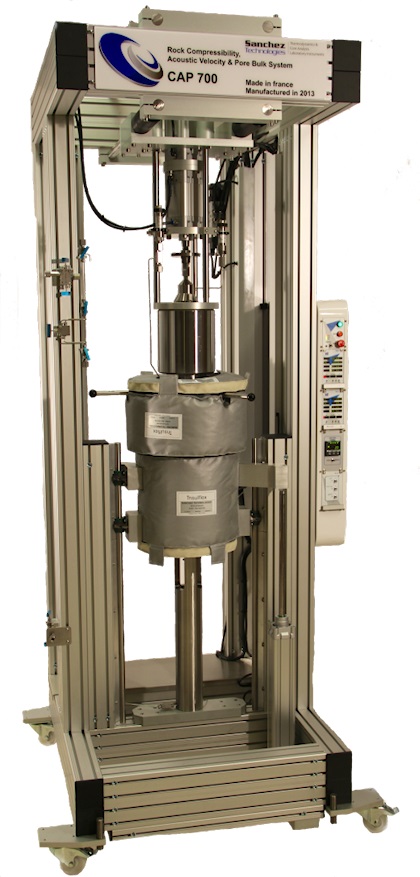Compressibility of Rock, Acoustic Velocity and Pore Bulk System 700 bar
The CAP 700 is used for the measurement of rock compressibility, acoustic velocity and pores & bulk volume compressibility. The system is based on a core holder triaxial type that works at reservoir conditions (700 bars and 175 °C) with HP pumps for axial and radial stress.
Documentation
Transducers fixed at the end of two Titanium pistons are used to propagate ultrasonic waves from the source to the receiver along the axis of confined cylindrical samples.
Removable piston plates are manufactured to match with various specimen diameters. The frequency range is between 250 kHz and 1MHz. Transducers sequentially propagate a single compressional (P) and two plane polarized shear (S1 and S2) waves.
The compressional and shear velocities may be combined with bulk density to calculate dynamic Young’s modulus, bulk modulus, shear modulus, and Poisson’s ratio. P and S wave signal selection, source excitation, and signal conditioning of the ultrasonic signal from the receiver are controlled by a pulse generator.
In the same mounting, a special sleeve is equipped with electrodes in order to manage resistivity measurement. All wirings are plugged on a LCR meter, outside the system thanks to a High Pressure Coaxial Lead Through. And then, a LVDT system, attached on the piston outside the vessel, allows determining compressibility throughout the duration of the experimentation.

